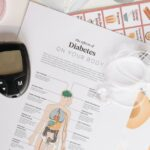Read in this post-Sugar Control Diet: Managing your sugar intake is crucial for maintaining good health and preventing issues like obesity, diabetes, and heart disease. Choosing the right foods can help regulate blood sugar levels and reduce the risk of developing health complications. Here’s a guide on what to eat and what to avoid when trying to control your sugar consumption.
What to Eat (Low-Sugar and Healthy Options)
| What to Eat (Low-Sugar and Healthy Options) | -Examples | -Benefits: | TIPS |
| 1. Whole Fruits (in moderation) | Apples, berries (strawberries, blueberries), oranges, pears | Whole fruits contain natural sugars, but they are also rich in fiber, vitamins, and antioxidants, which slow down sugar absorption and provide health benefits. | Opt for fresh, whole fruits over fruit juices, as they contain fiber that helps regulate blood sugar. |
| 2. Vegetables | Leafy greens (spinach, kale), broccoli, carrots, cucumbers, bell peppers. | Vegetables are low in sugar and high in fiber, vitamins, and minerals. They help fill you up without causing blood sugar spikes. | Aim for a variety of colorful vegetables in your meals. |
| 3. Whole Grains | Brown rice, oats, quinoa, barley, whole wheat. | Whole grains are high in fiber, which slows sugar absorption and helps maintain steady blood sugar levels. | Avoid refined grains like white bread and white rice, which can cause blood sugar spikes. |
| 4. Protein-Rich Foods | Eggs, chicken, turkey, tofu, lentils, beans, fish. | Protein helps stabilize blood sugar by slowing down the digestion of carbohydrates | Combine proteins with high-fiber foods like vegetables for balanced meals. |
| 5. Healthy Fats | Avocados, nuts (almonds, walnuts), seeds (chia, flaxseed), olive oil. | Healthy fats help you feel full and satisfied, preventing sugar cravings | Include a small portion of healthy fats in every meal to support balanced blood sugar levels. |
| 6. Low-Sugar Dairy or Dairy Alternatives | Unsweetened almond milk, Greek yogurt (plain), cheese. | Dairy products can provide protein and calcium, but it’s important to choose unsweetened varieties to avoid added sugars. | Avoid flavored yogurts, which often contain high amounts of sugar. |
| 7. Nuts and Seeds | Almonds, walnuts, chia seeds, flaxseeds, pumpkin seeds. | Rich in healthy fats and fiber, nuts and seeds help keep you full and maintain stable blood sugar levels. | Choose unsalted, raw, or lightly roasted nuts for a healthy snack. |
| 8. Legumes | Lentils, chickpeas, kidney beans, black beans. | Legumes are a good source of fiber, protein, and complex carbohydrates, which help stabilize blood sugar levels. | Add legumes to salads, soups, or curries for a filling, nutritious meal. |

What to Avoid (High-Sugar Foods)
| What to Avoid (High-Sugar Foods) | -Examples | Why to Avoid | TIPS |
| 1. Sugary Beverages | Soda, energy drinks, sweetened iced tea, fruit juices, and flavored milk | These drinks contain a lot of added sugars, which cause rapid spikes in blood sugar levels and provide empty calories. | Replace sugary drinks with water, herbal teas, or sparkling water with a slice of lemon. |
| 2. Candy and Sweets | Candy bars, chocolates (especially milk chocolates), gummies, lollipops, cookies, cakes. | These are loaded with added sugars and provide no nutritional value, contributing to weight gain and blood sugar spikes. | If you crave something sweet, opt for a piece of dark chocolate (70% cocoa or higher) in moderation. |
| 3. Refined Carbohydrates | White bread, white rice, pastries, pasta made from refined flour. | Refined carbs are quickly broken down into sugars in the body, causing spikes in blood sugar and increasing hunger shortly after eating. | Switch to whole grains like brown rice, whole wheat bread, or quinoa |
| 4. Sweetened Breakfast Cereals | Cornflakes, frosted cereals, granola with added sugar. | Many breakfast cereals contain high amounts of added sugars, which can cause sugar crashes later in the day. | Opt for unsweetened cereals like plain oats or whole-grain cereals, and add fresh fruit for natural sweetness. |
| 5. Packaged Snack Foods | Chips, crackers, granola bars, cookies. | Many packaged snacks contain hidden sugars, refined flours, and unhealthy fats, all of which can lead to increased blood sugar levels. | Snack on fresh vegetables, unsweetened yogurt, or a handful of nuts instead. |
| 6. Baked Goods | Muffins, donuts, cakes, pies, pastries. | Baked goods are often made with refined flour, sugar, and unhealthy fats, leading to high blood sugar and weight gain. | If you’re craving baked goods, try baking at home using healthier alternatives like almond flour, whole wheat flour, and natural sweeteners. |
| 7. Sweetened Dairy Products | Flavored yogurts, sweetened condensed milk, ice cream. | These dairy products are often high in added sugars and can spike your blood sugar levels. | Choose plain, unsweetened yogurt or dairy alternatives and sweeten naturally with fresh fruits. |
| 8. Processed and Packaged Foods | Packaged sauces (ketchup, BBQ sauce), frozen meals, pre-made salad dressings. | Many processed foods contain hidden sugars that you may not realize are there, contributing to overall high sugar intake | Make sauces and dressings at home using fresh ingredients to control sugar content |
Final Thoughts
By making informed food choices, you can significantly reduce your sugar intake and maintain stable blood sugar levels. Focus on whole, unprocessed foods, rich in fiber, healthy fats, and protein, while avoiding refined sugars and processed snacks. This approach will not only help in managing your sugar consumption but also promote overall health and well-being.
- Diwali 2025 kab hai : कब मनाई जाएगी दीवाली? एक क्लिक में नोट करें सही डेट और पूजा समय
- Govardhan Puja 2025 :गोवर्धन पूजा का तारीख, महत्व, कथा और पूजा विधि
- Bhai Dooj 2025:तिथि, महत्व और पूजा विधि |
- Skin Whitening: Best Soap, Cream, Multani Mitti, Vitamin E & 9Natural Treatment Guide
- Multani Mitti for Skin Whitening: मुल्तानी मिट्टी से चेहरे को गोरा बनाने के आसान 7 घरेलू नुस्खे









